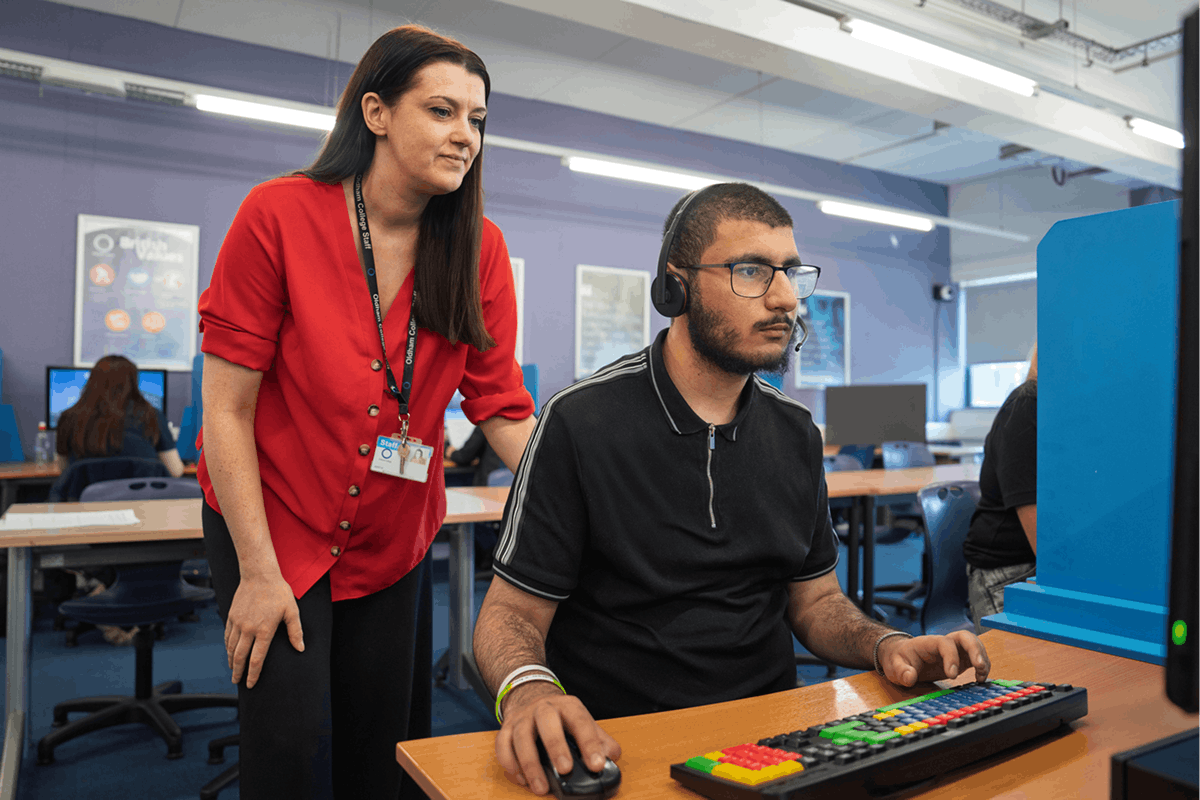Exam season brings pressure for everyone - students, teachers, and Exam Officers alike. As the number of learners needing exam access arrangements rises, schools are facing growing caseloads, shrinking budgets and complex logistics. Many are asking the same question: how can we make this simpler, fairer and more sustainable for every learner?
Across the UK, a new approach is emerging. Schools are replacing paper-heavy processes and last-minute staffing challenges with digital exam access that gives every student the tools they need to succeed. It’s an approach that saves time and money, strengthens inclusion, and, as new research shows, helps improve outcomes.
The shift from human to computer readers
Traditionally, access arrangements relied on human readers, scribes and separate exam rooms. But with one in five GCSE candidates now receiving support, this model has become increasingly difficult to manage. When a reader or scribe is unavailable, Exam Officers must scramble to fill critical roles. The result is extra cost, added stress and time diverted from teaching and learning.
Digital tools are helping to change that. Schools and colleges are turning to computer-based readers and digital scribes, such as Read&Write and ExamWritePad, which allow students who usually use text-to-speech or dictation to work independently in exams. These tools meet JCQ requirements, support consistency, and reduce the reliance on human support - all while maintaining fairness and independence for students.
Evidence from UCL and Liverpool John Moores
The shift to digital access isn’t just about convenience; it’s backed by evidence.
A recent study from University College London and Liverpool John Moores University found that students who used a keyboard in exams performed significantly better than those writing by hand. Across 156 GCSE students, roughly half of whom had identified learning differences:
- Students without literacy differences scored 17% higher on average.
- Students with learning differences improved by 14%.
- Typed answers were up to 50% longer, showing greater structure and depth.
These findings reinforce what many schools are already seeing: when learners can use familiar digital tools in exams, they perform more confidently and independently - without additional pressure on staff.
Sources: Emma Sumner, Liverpool John Moores University; UCL Discovery Project Report; The Guardian, Aug 2025.
Schools and colleges leading the change
At Oldham College, staff introduced Read&Write for learners entitled to a reader. The impact was immediate. Fewer human readers were needed, exam logistics became smoother and staff time was freed up for other priorities. Exam Officers and Dyslexia Tutors reported less stress and greater confidence that every learner’s support matched their normal way of working.
Similar results are being seen across the country. Schools adopting digital exam access report:
- Lower costs – once tools are in place, support scales easily, cutting costs by up to 90% compared with human readers and scribes.
- Reduced admin – fewer printed papers, less scanning and simpler record keeping on exam day.
- Better outcomes – students work in the same way they learn in class, leading to improved results and reduced anxiety.
It’s a change that benefits everyone - students, staff and schools alike.

CUSTOMER STORY
Helping every learner feel confident and supported in exams at Oldham College
Discover how Read&Write supports learners at Oldham College as a digital reader and scribe in line with JCQ access arrangements.
The impact beyond the exam room
Neuroinclusion and efficiency are not competing goals. They’re connected. When schools design access around how students actually learn, outcomes improve for everyone.
Digital exam access removes barriers for learners, frees up staff capacity and ensures compliance without additional burden. It’s a practical example of inclusion in action - proving that the most equitable solutions are often the most effective ones too.


